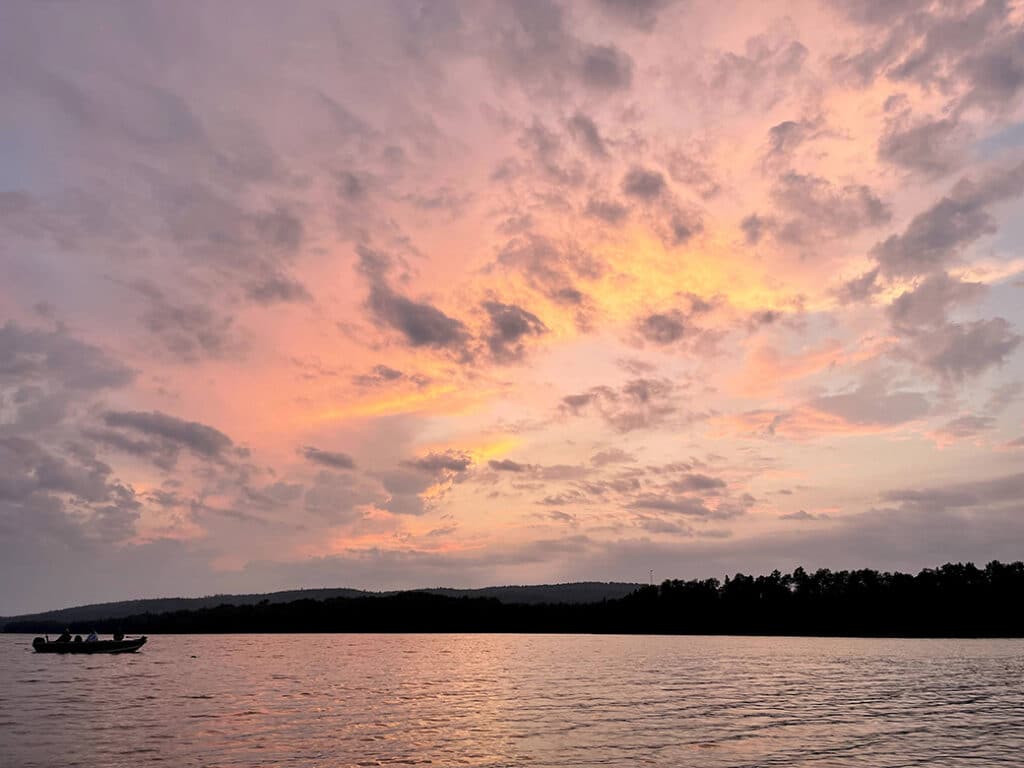
“This is where we’re going to camp next year,” I remarked as we drove past the first few campsites at the Trails End Campground. My husband and I were in the middle of our first-ever week-long Superior National Forest tent camping trip. And in case you missed part one of this series, we absolutely loved it.
On our first Superior National Forest camping trip, this almost unspoiled land lit a spark in us that has brought us back on a sort of pilgrimage year after year. Each visit has been to a new campground and unforgettable new experiences. This national forest, the largest east of the Mississippi, will forever hold a special place in my heart. As I’ve journeyed across the country and around the world, I continue to insist that this is one of the most beautiful and magical places on earth.
As we’ve experienced a resurgence of interest in outdoor recreation in recent years, we’ve seen changes to our beloved wild spaces. It can feel like an impossible task to try and reserve a weekend campsite at a popular state park campground during peak camping season. And forget about trying to find a parking spot at a popular trailhead on a peak fall colors weekend. It’s wonderful to have so many new stewards to love and care for the outdoors. But I’ve also witnessed how the increased traffic has widened trails, caused erosion, and affected delicate plant life.
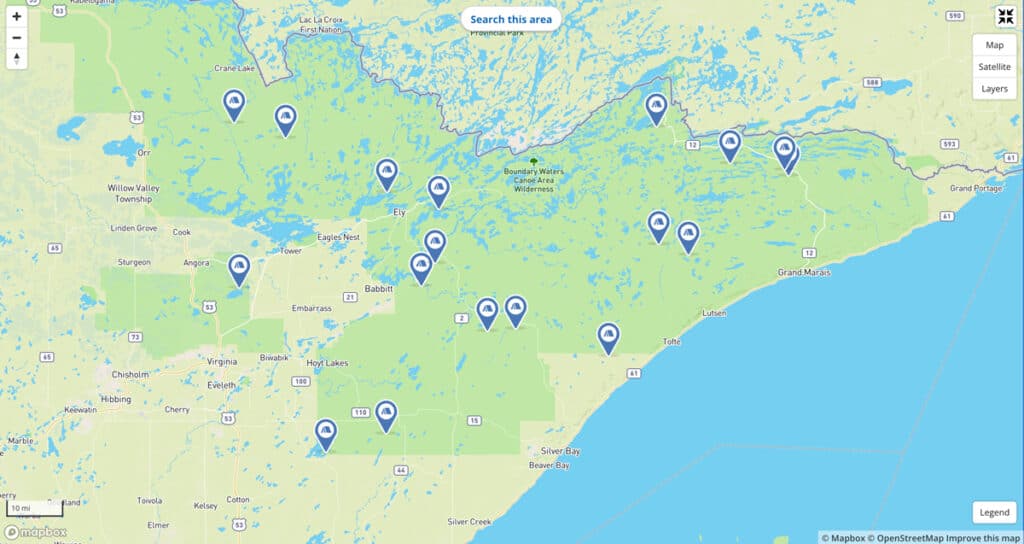
All season long, while trailheads for beautiful hikes like Bean and Bear Lakes are jam-packed, and every campsite at the majestic Tettgouche State Park is booked solid for the entire season, there are places within the 3-million-acre Superior National Forest that feel relatively untouched. There are beautiful campgrounds where you can find first-come-first-serve availability most days of the week. And hiking trails where you can spend hours sauntering along lakes and ridges without seeing another person.
All of this, and so much more, is what makes the Superior National Forest one of my favorite places to camp in Minnesota. This article is part two of a two-part series of a beginner’s guide to camping in the Superior National Forest. In part one, I unpacked the vastness and abundance of recreational opportunities in this 3-million-acre outdoors person’s paradise. If you haven’t read it, you might want to go back and read that first. Then make sure you come back to part two where I share the three best Superior National Forest campgrounds for beginners. Either way, you’ll gain a plethora of new knowledge and inspiration for the upcoming camping season.
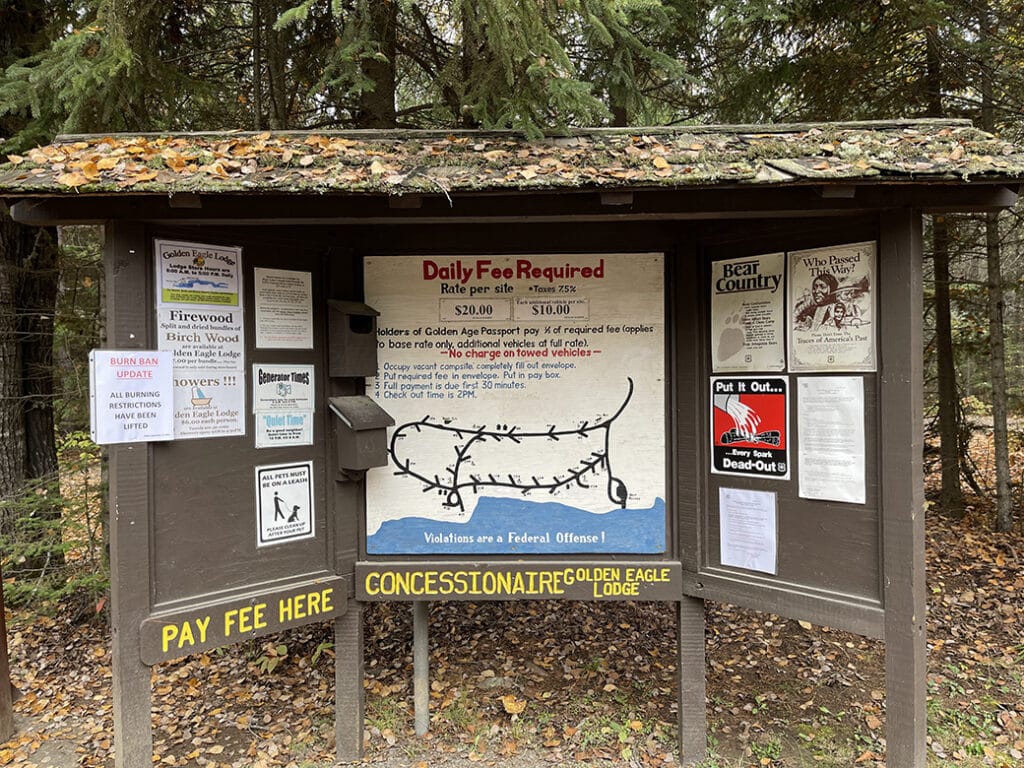
What you need to know before camping in the Superior National Forest
The Superior National Forest campground rules are posted on an information kiosk near the entry of each campground. I’ve found, however, that they can vary from campground to campground. It can be confusing when you’re just getting started. So, my goal for this section is to provide clarity and make the whole process easier for you.
Specific to the Superior National Forest, there is a limit of nine people per site with parking for one non-towed vehicle and one tent or RV. Keep in mind that while nearly every campsite can accommodate tents, not every campsite will work for an RV. Always read the description before booking if you’re traveling with an RV of any size. There is a daily fee for each additional non-towed vehicle per campsite. At the time of publication, reservable campsites can be booked six months in advance for up to 14 nights.
As I mentioned, each campground has its own specific rules regarding things like chainsaws, quiet hours, generators, and parking. I always allow a few minutes to read the specific rules on the entrance sign after I set up and pay.
The following rules apply to camping in general but I’ve tailored this list to be specific to northeast Minnesota. Whether you’re out for a day hike or a week-long camping trip, always practice the seven principles of Leave No Trace. You can learn more about the seven principles in this article. Here’s a quick review.
1 – Plan Ahead & Prepare
2 – Travel & Camp on Durable Surfaces
3 – Dispose of Waste Properly
4 – Leave What You Find
5 – Minimize Campfire Impacts
6 – Respect Wildlife
7 – Be Considerate of Others
Always check the current fire danger and campfire restrictions before you go. Never move firewood or leave a campfire unattended. When leaving your campsite, make sure that your fire is completely out. Drown it with water and stir to ensure that any remaining coals are cool to the touch.
Stick to established campsites and trails. It might be tempting to set your tent up on the edge of a cliff or right next to the lake. This not only creates a potentially dangerous situation with weather and wind but also causes significant damage to the land.
Pack out all of your trash and dispose of it properly. This includes often overlooked items like cigarette butts and micro trash such as corners of food wrappers that may have not found their way into your garbage bag. Remember that burning trash is illegal and pollutes the delicate ecosystem.
Leash and pick up after your pet, even if your pet is well-trained and behaved. I’ve run into both bears and coyotes in popular Superior National Forest Campgrounds. And while a bit more elusive, wolves are active in the Superior National Forest as well.
Always wash yourself, dishes, clothing, and anything else at a minimum of 200 feet from any water source with biodegradable soap. Be kind and considerate of others. Noise, even quiet conversations, carries in these quiet spaces—especially over water. Finally, be respectful of wildlife. Never feed them and always be bear aware. You can learn more about bear safety while camping in the Superior National Forest here.
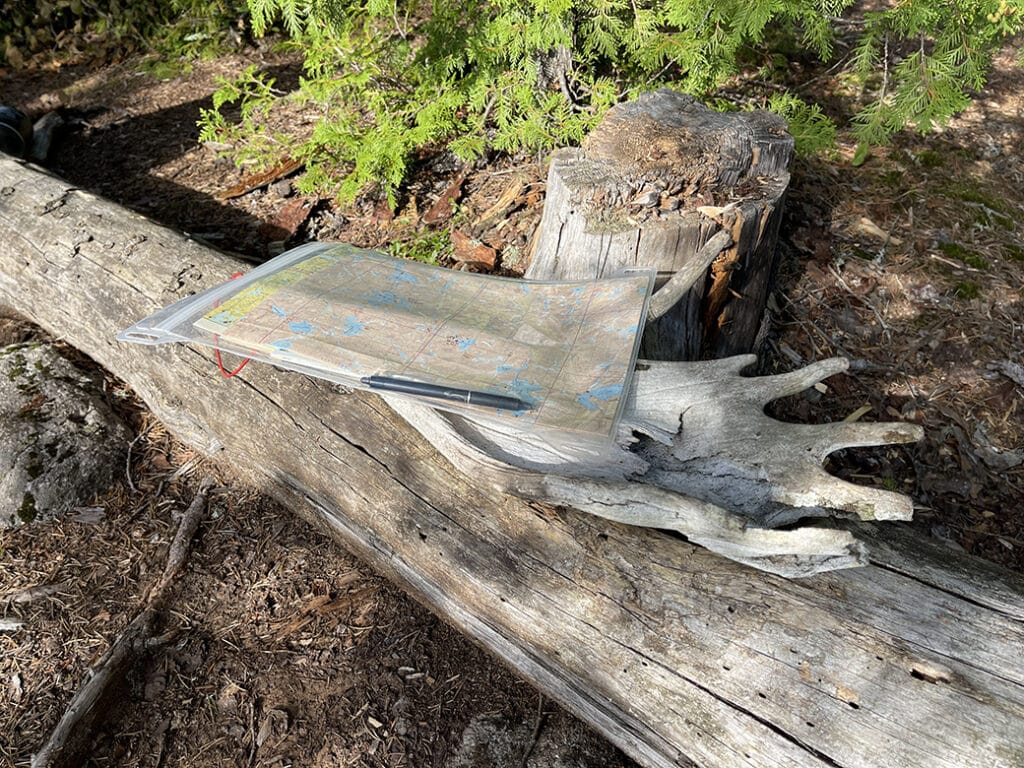
Tips for camping near the BWCAW
Several Superior National Forest Campgrounds are on the edge of the Boundary Waters Canoe Area Wilderness (BWCAW) where special rules apply. You can learn more about the BWCAW in this downloadable guide. Or check out these three short, but information-rich, videos here.
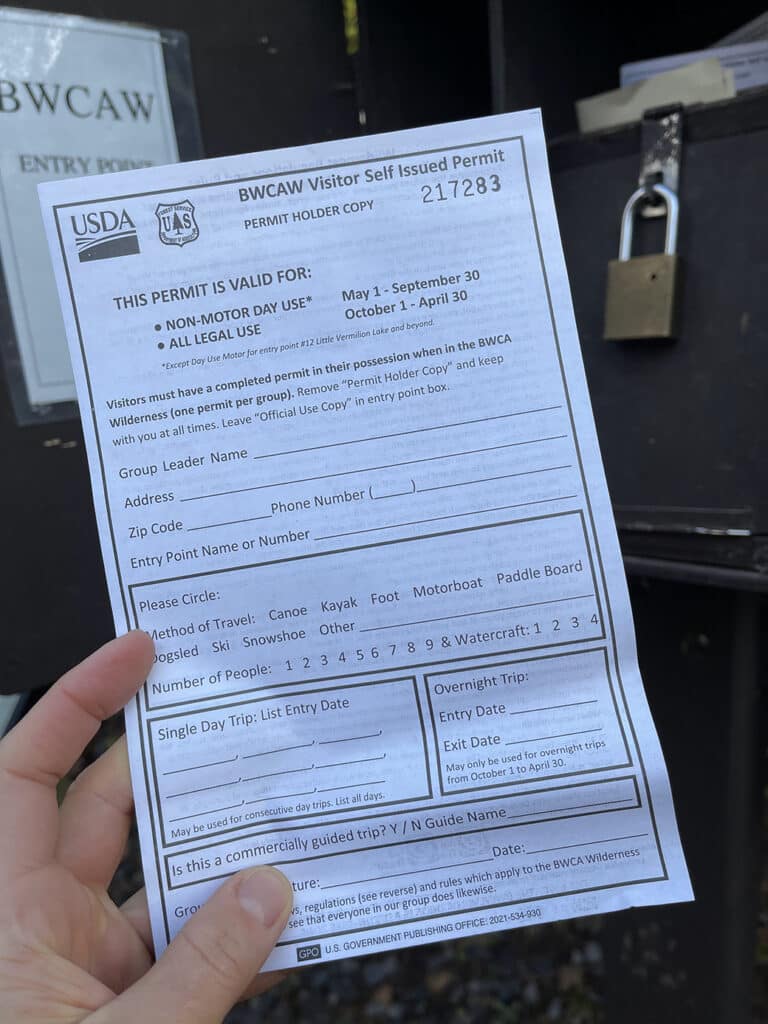
All travel in the BWCAW requires a permit. Be sure to complete a day-use permit for your party of no more than nine people at the self-issued permit station. You can find a full list of wilderness rules and regulations on the back of your permit.
Be prepared with maps and a compass and know how to use them. There are no signs to lead the way and it’s rare to have a wireless phone signal. Metal and glass containers are prohibited except for things like medications, sunscreen, bug repellant, and gas cylinders for stoves. Everything else must be repackaged in plastic, even if you’re just on a day trip. This is something, that as beginners, we did not know.
If you carry it in, you are required to carry it out. This includes things like unused bait, leftover food, orange peels and apple cores, cigarette butts, diapers, wipes, and feminine products. Do remove or deface cultural or historic artifacts and don’t take rocks, agates, plants, or other objects like antlers or bones. Leave them for the next explorers to enjoy. Take breaks away from trails and portages and avoid using campsites for day use. Finally, the BWCAW is a drone-free zone. These rules and regulations are enforceable with a penalty of up to $5000 and/or up to six months in jail.
One final note that I don’t mention often enough—never head out on a camping trip or day hike without a well-stocked first aid kit. We break into our kit several times each year and are always thankful to be prepared. If this camping thing is something you enjoy, it’s a good idea to enroll in a Wilderness First Aid course. We learned so much when we were certified and wished we’d done it sooner. In the meantime, the American Red Cross has an incredible First Aid App. You can learn more and find links to download it here.
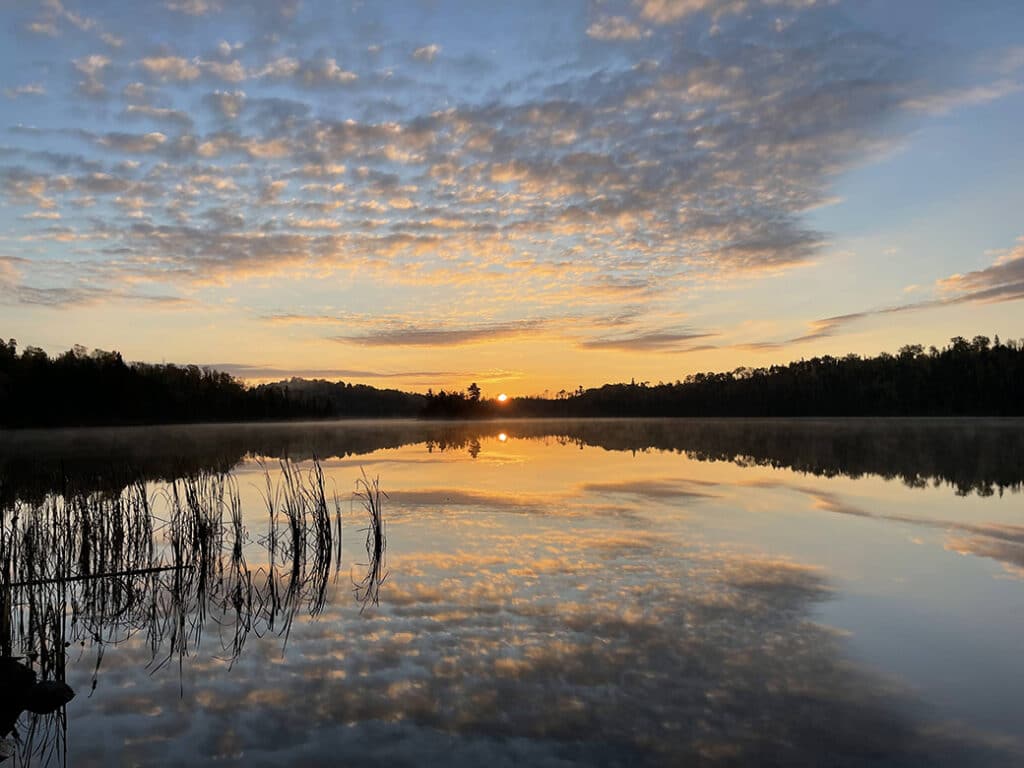
Where to learn about Superior National Forest campgrounds
The Ranger District Offices are wonderful for finding information on recreational opportunities in the Superior National Forest. You’ll find information on campgrounds, hiking trails, paddle routes, and more. They also offer a fantastic map that covers the entire forest and features campsites, trailheads, boat launches, etc. I picked one up last year for $14 and wish I had it when I first started exploring this area. You can learn more about the offices, their locations, hours, and contact information here.
You will find an abundance of information on the internet and social media. Always be aware that not everything on the internet is accurate. I have watched countless videos on YouTube and Instagram where creators are breaking rules and violating laws. If something doesn’t seem right, check with a credible source like the Forest Service.
The US Forest Service offers an impressive amount of information on its website here. And of course, Quetico Superior Wilderness News is packed with great insider tips and special places. Start by browsing the parks page or use the search tool at the top of the page to look for something more specific.
The three best campgrounds in the Superior National Forest for beginners
Now for the information that brought you here in the first place.
I have visited every campground in the Superior National Forest and camped at more than a dozen. There are wonderful things about every one of these campgrounds and I can’t think of one I wouldn’t consider exploring again. That said, there are several that are best for beginners. All three of these campgrounds are very popular, so if you’re looking for something quieter and more remote, you might want to do your own research using the resources provided below.
All three of these campgrounds are popular for a reason. That said, I’d be happy to revisit any of them. I chose these three based on the comfort and amenities I was looking for when we were beginner campers. I also considered the activities that are in the campground or nearby. So, without further ado, here are the three best campgrounds in the Superior National Forest for beginners in no particular order.
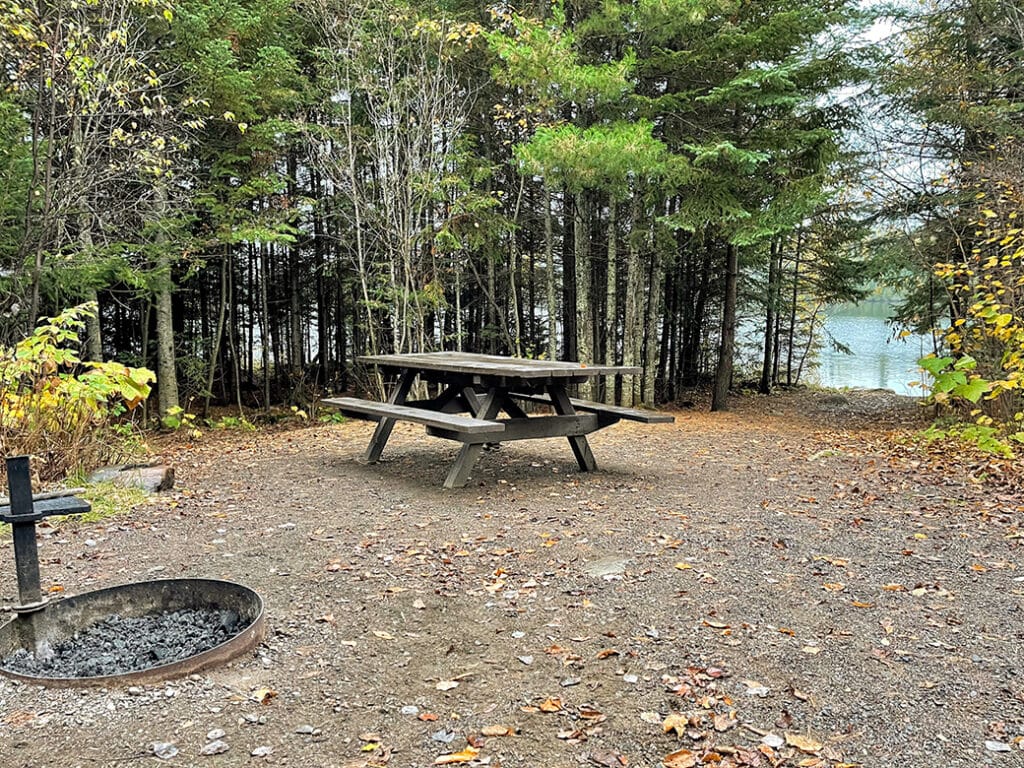
Fall Lake Campground
Since I mentioned it so many times in part one, I’ll start with the Fall Lake Campground. There’s a reason this campground is booked out the entire peak season. Thankfully, there are plenty of stunning first-come-first-serve campsites that I’ve managed to get myself into.
This is the only campground in the Superior National Forest with modern bathhouses and some sites have electric hookups. You can rent watercraft and purchase firewood from the onsite concessionaire. Fall Lake is on the edge of the BWCAW so if you’re planning to paddle into the wilderness, be sure to fill out a permit at the self-issue permit station.
The Fall Lake Campground has a nice beach, playground, and a lovely hiking trail to walk the dog or stretch your legs. Don’t miss the nearby Kawishiwi Falls. The Superior National Forest District office is a destination in its own right with interactive displays and information about other recreational opportunities in the area.
It’s not just the bathhouses that make this campground so popular. The Fall Lake Campground is a short drive from Ely allowing easy access to resupply or pick up anything you may have forgotten.
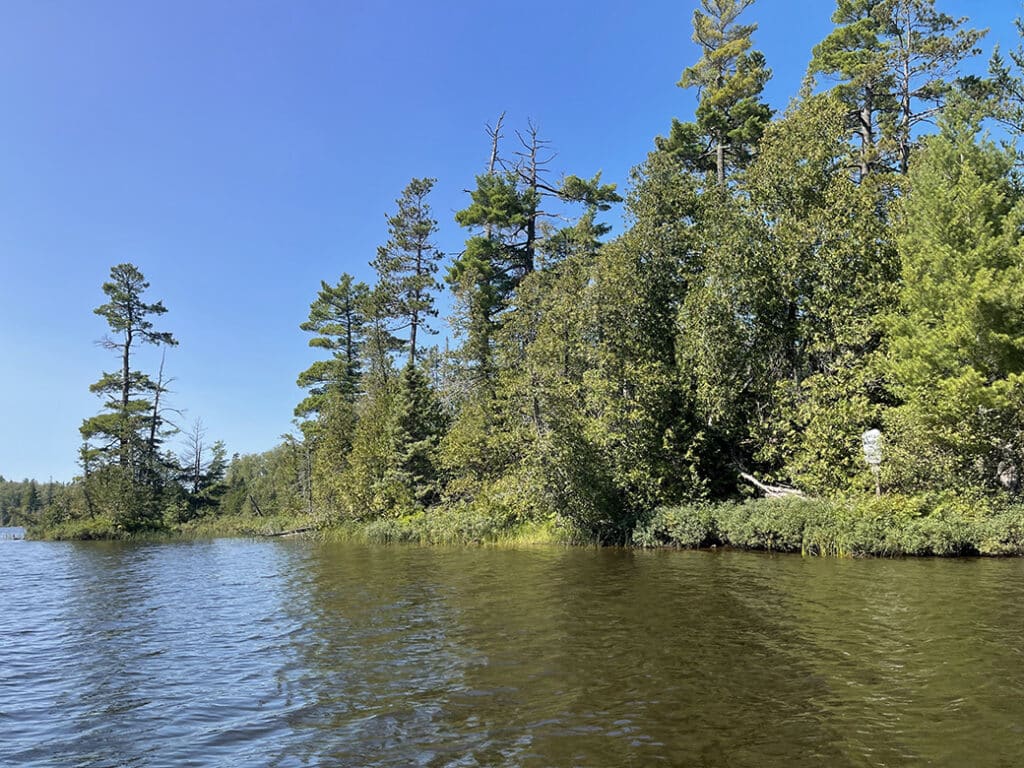
Sawbill Lake Campground
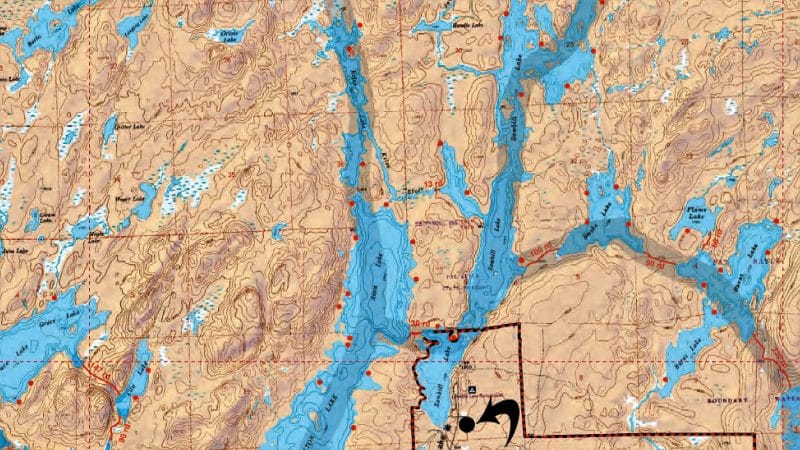
This is another campground on the edge of the wilderness and the wilderness is the reason this campground made the list. It’s a bit of a drive up the Sawbill Trail from Scenic Highway 61 but you’ll be rewarded with the darkest skies you’ve ever seen and plenty of peaceful moments.
Like Fall Lake, there is an outfitter nearby that offers rentals, pay showers, and firewood. But the very best thing about the Sawbill Lake Campground is the easy day trip paddle loop you can take through the BWCAW. This is a wonderful way to test your wilderness skills before heading out for a multi-day trip. You can learn more about the route and find a map here.
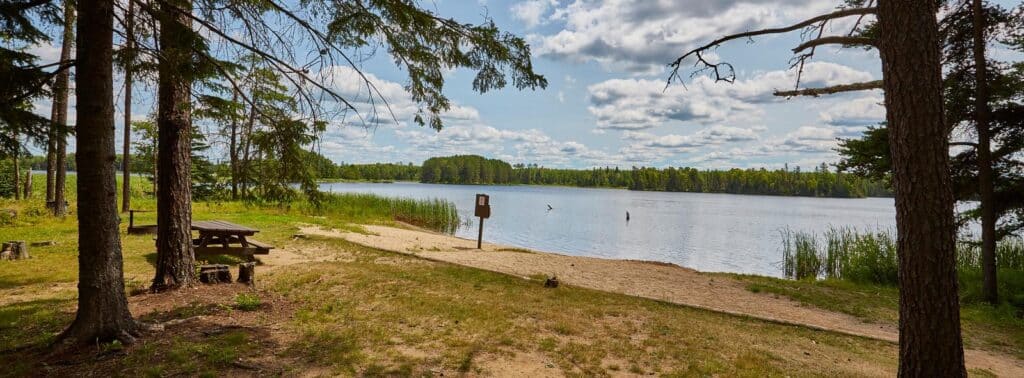
Whiteface Reservoir Campground
About an hour closer to the Twin Cities is the Whiteface Reservoir Campground. Another popular campground due to its proximity to Duluth features all of the amenities you’re looking for as a Superior National Forest beginner. This large campground features a nice beach, playground, and picnic area. There’s a lovely hiking trail with plenty of trees and plants to identify.
Like the other two, an onsite concessionaire sells things like live bait and firewood. And campground hosts keep this campground extra tidy. This is one of the few campgrounds that offers electric hookups so it’s a great choice for campers with RVs.
Covering three million acres, the Superior National Forest is a paradise for anyone who enjoys the outdoors. 2,000 miles of trails provide recreational opportunities for hiking, riding, hunting, and more. 23 fee campgrounds offer stunning campsites with all the necessities like dumpsters, potable water, and toilets. If you visit during open water season, don’t miss the chance to swim, paddle, and fish. There are so many camping and recreational opportunities, you’ll be eager to return again and again. Keep in mind how precious these public wildlands are to our environment, wildlife, and humanity. And always leave it better than you found it.
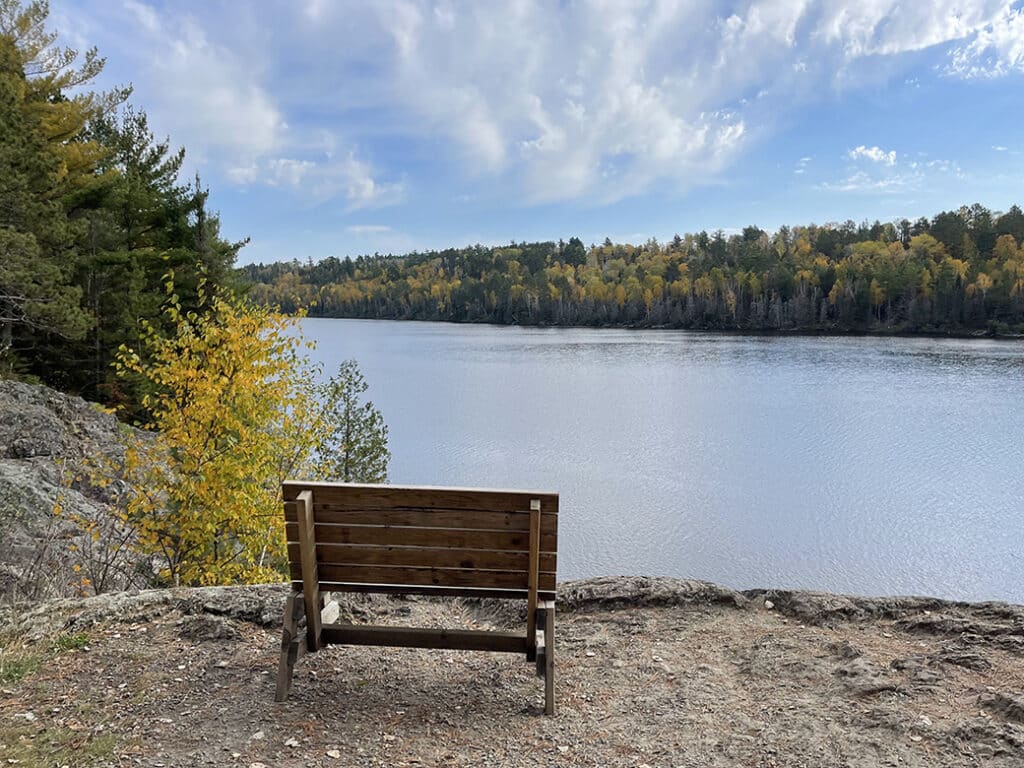
Additional Resources
- 5 tips for every beginner camping trip
- Tips for camping in bear territory in Northeast Minnesota
- The Superior National Forest Website
- Superior National Forest Maps & Publications
- Campground Camping in the Superior National Forest
- Superior National Forest downloadable camping guide and 2022 fee schedule
- BWCAW Rules and Regulations
- US Forest Service camping tips
- US Forest Service guide to outdoor safety
- US Forest Service safety tips for hiking
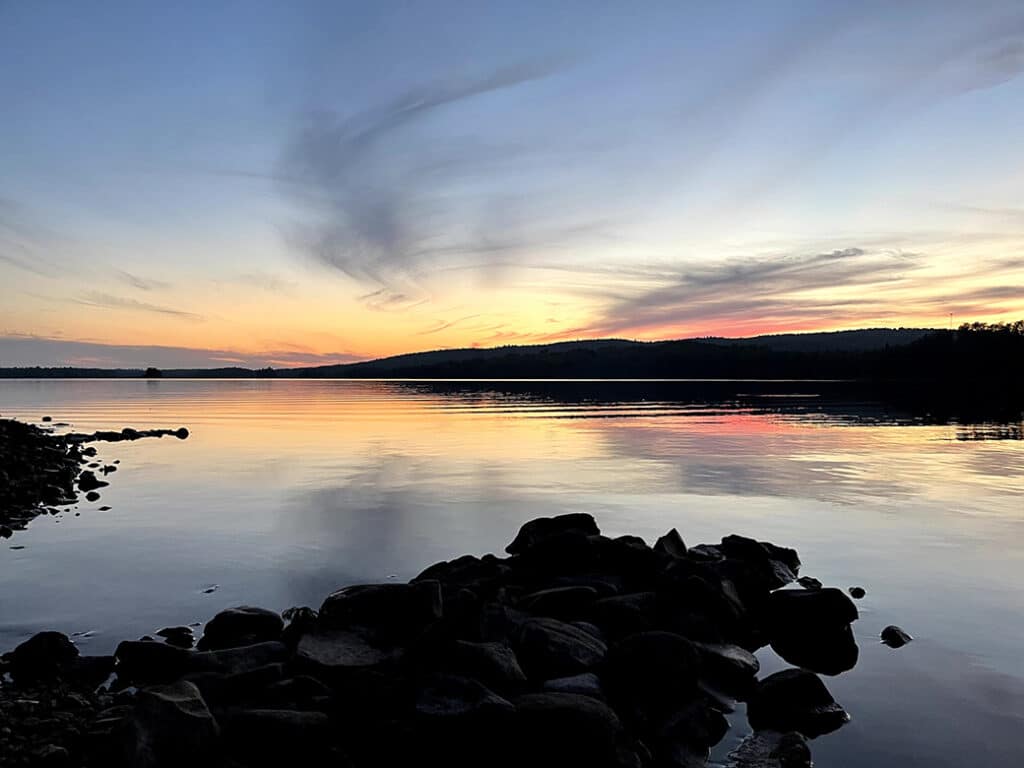
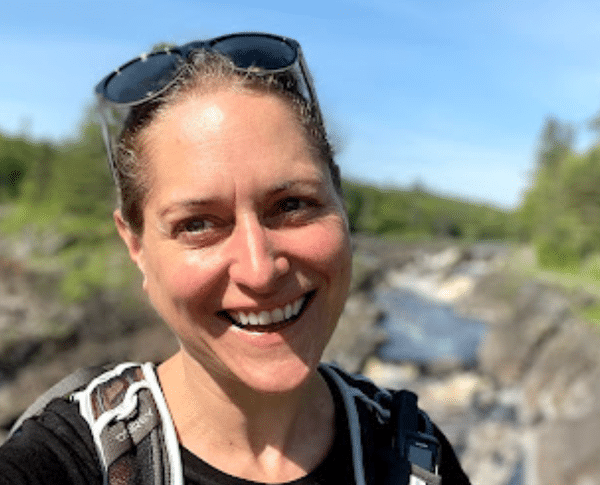
Holly Scherer is a Minnesota-based writer, photographer, outdoorswoman, and guide. She’s most at home in the great outdoors; camping, hiking, paddling, cycling, and gardening. When she’s not on an adventure, she and her husband live in the Twin Cities where they’re fond of saying, “home is where we store our outdoor gear.”

